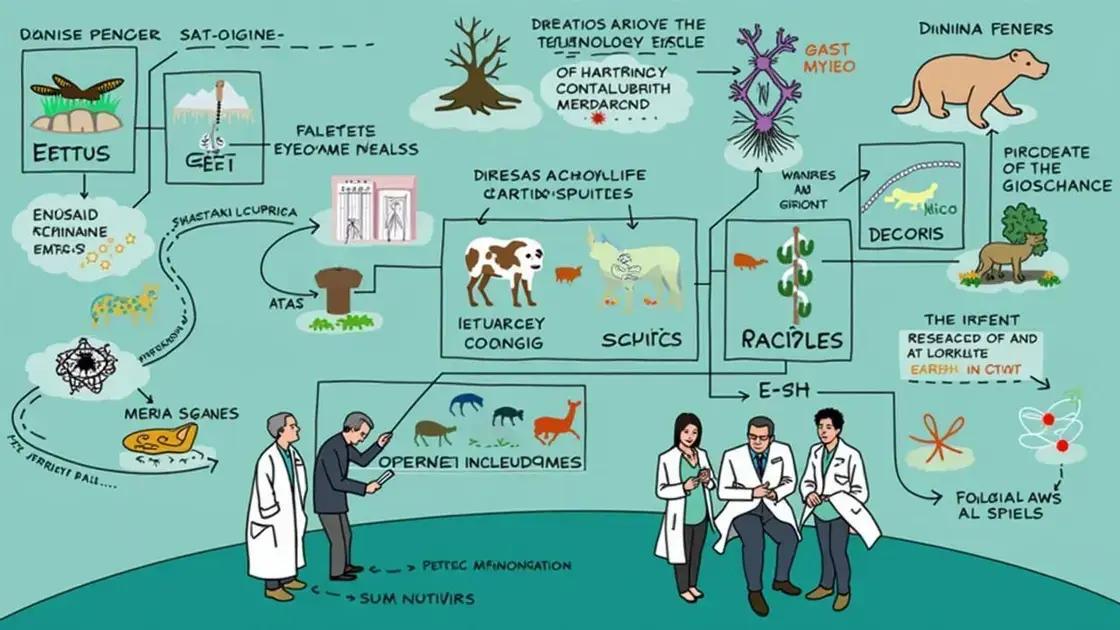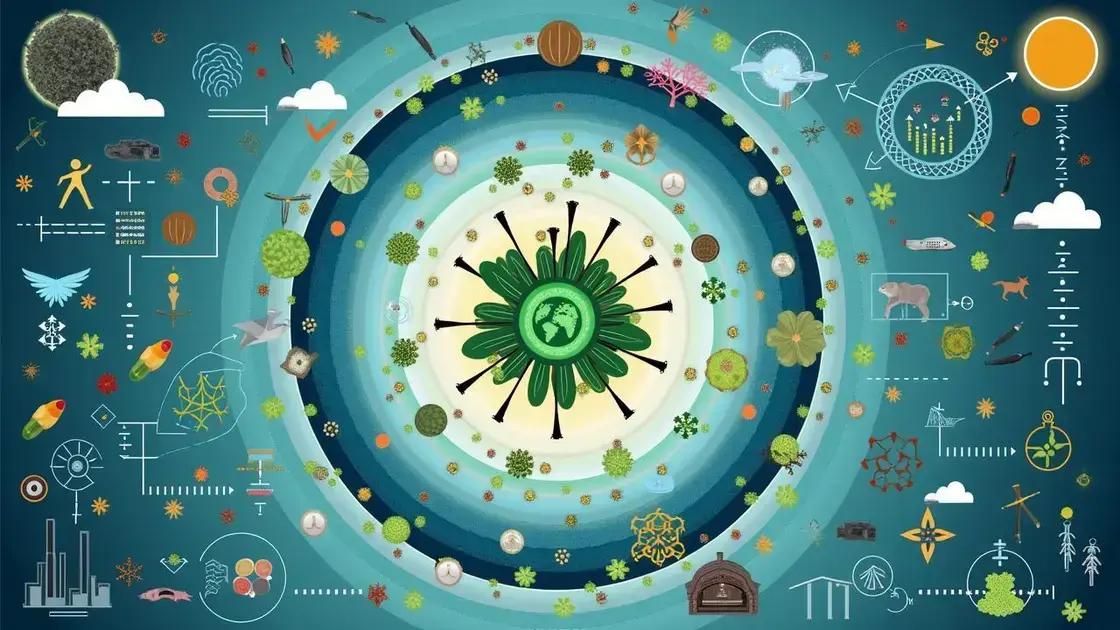Erettus research has unveiled significant insights into its biological properties, ecological roles, and potential applications in biotechnology and medicine, with ongoing studies focusing on the impacts of climate change, genetic diversity, and conservation efforts.
Erettus is a fascinating subject that has captured the attention of researchers worldwide. Recent studies and research have unveiled groundbreaking insights that deepen our understanding of this unique topic. In this article, we will explore an overview of recent Erettus research, discuss key findings from these studies, examine the impact of Erettus on current research, and speculate on future directions that this field might take. Join us as we delve into the enlightening world of Erettus!
Overview of Recent Erettus Research

The field of Erettus research has rapidly evolved, providing new insights and understanding. Recent studies have focused on various aspects of Erettus, including its biology, ecology, and potential applications. Researchers aim to uncover the unique characteristics of Erettus and how these can be leveraged for advancements in science.
Biological Insights
Many studies have concentrated on the biological properties of Erettus. Researchers have explored the genetics and cellular functions, discovering how Erettus responds to environmental changes. This research is crucial for understanding survival mechanisms and adaptability.
Ecological Impact
Erettus plays a significant role in its ecosystem. Recent research highlights how it interacts with other species and influences the biodiversity within its habitat. Understanding these relationships helps us appreciate the importance of conserving Erettus and its environment.
Applications in Science and Technology
The findings from Erettus research extend beyond academia. Innovations derived from Erettus studies could benefit various sectors, including medicine and environmental science. Researchers are exploring how Erettus can contribute to developing new therapies and sustainable practices.
As the exploration of Erettus continues, the wealth of information gathered offers exciting prospects for future studies. Engaging with these discoveries may lead to breakthroughs that can transform our understanding of biological systems.
Key Findings from Recent Studies

Recent studies have revealed significant findings regarding Erettus that enhance our understanding of this species. One important discovery is the genetic diversity present within different populations of Erettus. Research has shown that variations in genetic makeup contribute to adaptability in various environments.
Behavioral Patterns
Another key finding is related to the behavioral patterns of Erettus. Studies found that Erettus exhibits unique behaviors for navigating its surroundings, including complex mating rituals and feedings strategies. These behaviors are essential for survival and reproduction.
Environmental Interactions
Additionally, researchers highlighted the interactions Erettus has with its environment. For example, studies have shown how Erettus responds to changing climate conditions and the impact of habitat loss on its population dynamics. These insights emphasize the need for conservation efforts.
Medical and Scientific Applications
Finally, findings suggest that Erettus may hold promise for medical and scientific applications. Its unique biological properties could lead to advancements in drug development and ecological research. The potential uses of Erettus extend beyond traditional science and into innovative fields.
Impact of Erettus on Current Research

The impact of Erettus on current research is profound and multifaceted. As scientists delve deeper into Erettus studies, they uncover new avenues for exploration. One significant impact is the advancement of ecological understanding. Research on Erettus helps explain complex ecosystem dynamics and how different species interact within their environments.
Innovations in Biotechnology
Erettus research also drives innovations in biotechnology. Findings related to Erettus biology have implications for gene editing and synthetic biology. Researchers are studying the genetic material of Erettus to develop novel medical therapies and sustainable agricultural practices.
Insights into Evolutionary Biology
Moreover, the studies shed light on evolutionary biology. By observing the adaptations of Erettus to various environments, scientists gain insights into evolutionary processes. This knowledge is crucial for understanding how species evolve in response to environmental challenges.
Collaborative Research Opportunities
The focus on Erettus has also fostered collaborative research opportunities across disciplines. Researchers from ecology, genetics, and medicine are coming together to share knowledge and methods. This interdisciplinary approach enhances the quality and scope of research on Erettus.
Future Directions in Erettus Research

Future directions in Erettus research offer exciting possibilities. Scientists are eager to explore various uninvestigated aspects of Erettus. One area of focus is the impact of climate change on Erettus populations. Understanding how changing temperatures and weather patterns affect their habitats will be crucial for conservation efforts.
Genomic Studies
Future research will also likely delve into genomic studies. These studies can uncover genetic traits that enable Erettus to thrive in diverse environments. By mapping the genome of Erettus, researchers can identify specific genes linked to resilience and adaptability.
Ecological Conservation
Additionally, there is a growing emphasis on ecological conservation. As Erettus research progresses, strategies to protect their habitats will be developed. This could involve collaboration with environmental organizations to implement effective conservation practices.
Biomedical Applications
Another promising avenue is the exploration of biomedical applications of Erettus. Studies may focus on identifying compounds within Erettus that can lead to new medicines or treatments. This intersection of research could have significant implications for healthcare.
In Summary: Erettus Research and Its Importance
The exploration of Erettus and its recent studies have unveiled crucial insights that enhance our understanding of this species. From the behavioral patterns and ecological impacts to genetic diversity and medical applications, Erettus research continues to shape various scientific fields.
As we look forward, future directions in Erettus research promise exciting opportunities to tackle challenges such as climate change, biodiversity conservation, and advancements in biotechnology. The collaborative efforts among researchers hold great potential for uncovering new knowledge and applications.
Ultimately, the ongoing investigation into Erettus will not only enrich our understanding of this remarkable organism but also contribute positively to broader scientific and ecological initiatives.
FAQ – Frequently Asked Questions about Erettus Research
What is Erettus and why is it important?
Erettus is a unique species that provides valuable insights into ecological dynamics, genetic diversity, and potential biomedical applications.
What are some key findings from recent Erettus studies?
Recent studies have revealed important information about Erettus’s genetic diversity, behavioral patterns, and its interactions with the environment.
How does Erettus research contribute to ecological conservation?
Research on Erettus helps in understanding ecological relationships and the impact of environmental changes, leading to effective conservation strategies.
What future directions are anticipated in Erettus research?
Future research may focus on the effects of climate change, genomic studies, and exploring biomedical applications of Erettus.
How does Erettus relate to advancements in biotechnology?
Erettus research may lead to innovations in biotechnology, especially in drug development and sustainable practices.
Why is collaboration important in Erettus research?
Collaborative efforts among researchers from different fields enhance the quality and scope of Erettus studies, fostering interdisciplinary advancements.













